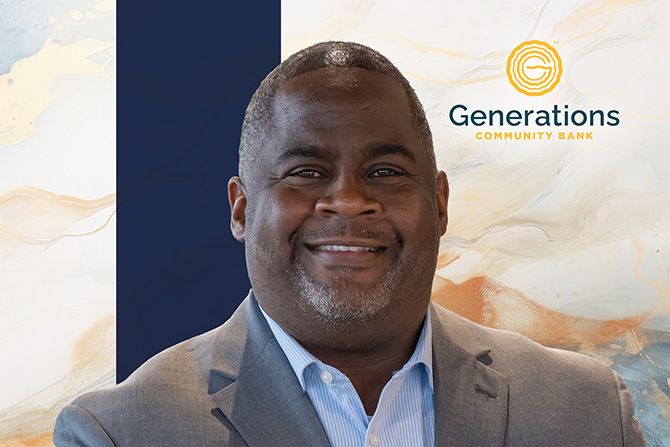
source: ABA analysis of FDIC data
Minority Depository Institution
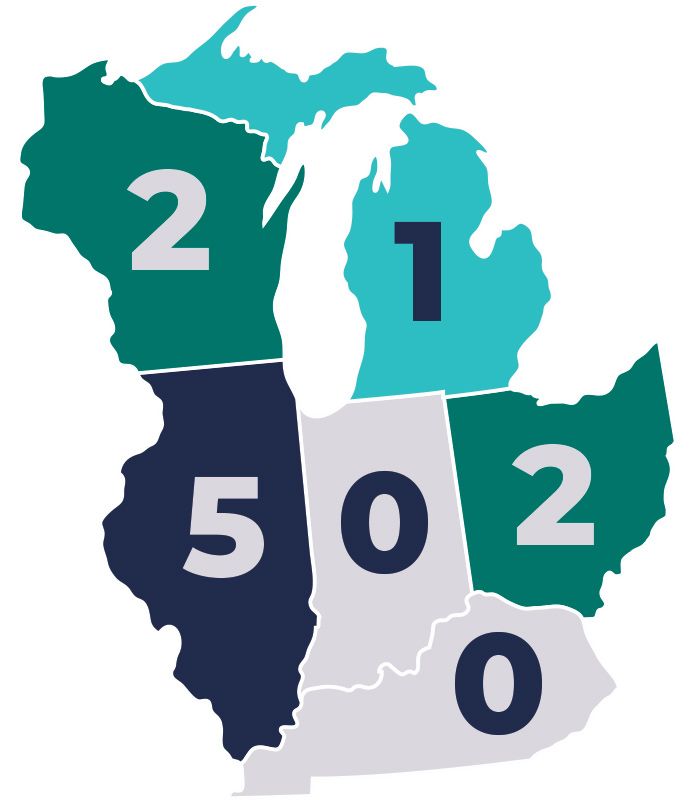
source: IBA analysis of FDIC data

source: IBA analysis of FDIC data
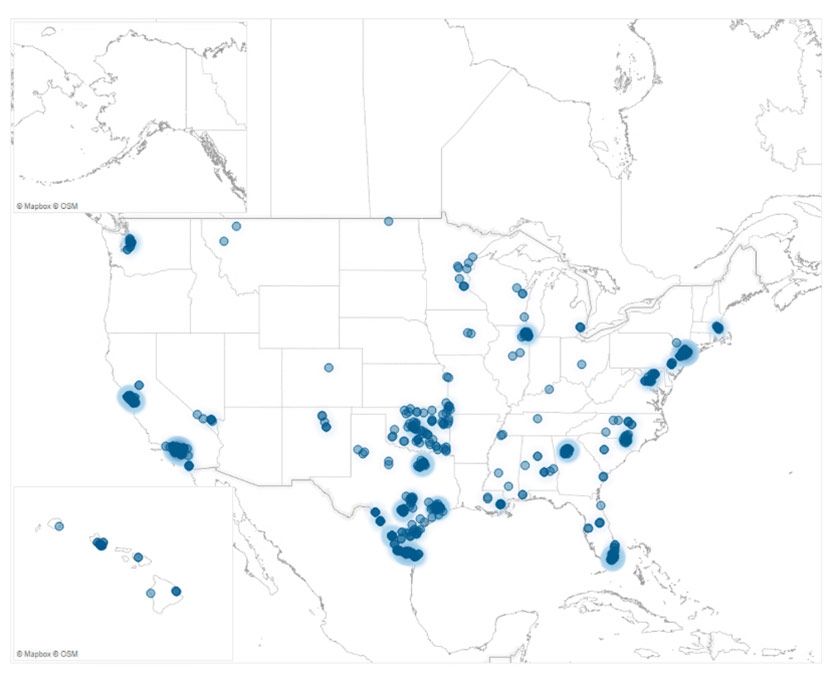
source: ABA analysis of FDIC data
Mission-Driven Institution
Generations’ primary source of initial funding came from Old National Bank, Evansville. Old National said that its primary regulator, the Office of the Comptroller of the Currency, approached CEO Jim Ryan several years ago and informally asked if his team could provide guidance to struggling MDIs. He asked the bank’s CEO Council, a group of emerging leaders within the institution6, to research the topic and come back with ideas. When they discovered Indiana didn’t have any, they recommended that instead of helping out-of-state organizations, Old National should help start a new one in Indiana.
“Along with its recommendation, the CEO Council created a high-level business plan for the MDI” that would become Generations Community Bank, according to Al London. London currently serves as senior vice president, community impact director for Old National, but will become Generations’ CEO when it completes its initial capital raise. “While ONB is proud to have several programs and initiatives in place to serve underserved populations, it recognizes that an even greater impact can be made by helping launch an MDI in our home state.”
Mission-driven banks play a crucial role in the communities they serve. The NBA report found communities with an MDI present have better credit health as measured by factors like credit score, total credit available and credit utilization rates, relative to demographically similar communities that do not have an MDI present. An American Bankers Association analysis of Small Business Administration 7(a) lending data found MDIs originated roughly 2,500 SBA loans in 2024, totaling $2.2 billion – a 250% increase from pre-COVID figures in 20197.
Generations’ mission is to speak the language of its community and similarly fill the gaps in access to quality financial products and services through the bank’s core values of collaboration, communication, innovation and discipline.
“It is important to note that MDIs were created in the first place because the traditional banking system is generally not equipped to address these issues as effectively as mission-driven banks,” said Rafael Sanchez, Old National Bank’s executive vice president, chief impact officer and Indianapolis Market president. “Old National intends to partner with Generations Community Bank to help drive even more impact to Hoosiers in central Indiana.”
Personal Mission
It was that dedication to the mission that led London to leave a successful, stable position with a national bank and take the leap to build something from scratch.
“I was at a point in my career where I had begun to ask myself, ‘What do I want my career legacy to be?’ and ‘How will I be able to identify how I made a difference in the community that I call home?’” he said. “The mission is part of the DNA of GCB versus being a department of the bank. My mother taught me and my siblings the importance/power of helping your fellow neighbor. The opportunity to lead Generations Community Bank allows me to honor that teaching while making an economic difference in Indiana.”
London and his team aim to address the wealth gap in central Indiana that, according to GCB’s research, currently shows white families holding on average 7.8 times the net wealth of a Black family and 30% more homeownership than Black individuals, 27% more than Latin Americans and 15% more than Asian Americans.
“Generations Community Bank’s service model aims to provide the resources, education and financial support to create more business owners and homeowners from underserved communities, and assist them in creating generational wealth,” he said.
Despite the bank’s emphasis on underserved populations, London emphasized that “this bank will serve the ENTIRE community. It is not a Black bank or a Latino bank or an Asian bank. It will be a very inclusive, mission-driven bank that will aim to create economic mobility for all Hoosiers and will pay close attention to and focus on those communities that have been overlooked and underserved.”
“In this sense, the bank will be focused on equality of opportunity, not equality of results,” Sanchez added. “We are proud to have the support of Gov. Mike Braun and our state and federal regulators.”
“I want to express my heartfelt appreciation for Jim Ryan, Rafael Sanchez, Roland Shelton, the ONB family and the Generations Community Bank Board of Directors for their unwavering support,” London added. “We truly appreciate the support we have received from other Indiana community banks who made the decision to join us on this historic journey.”
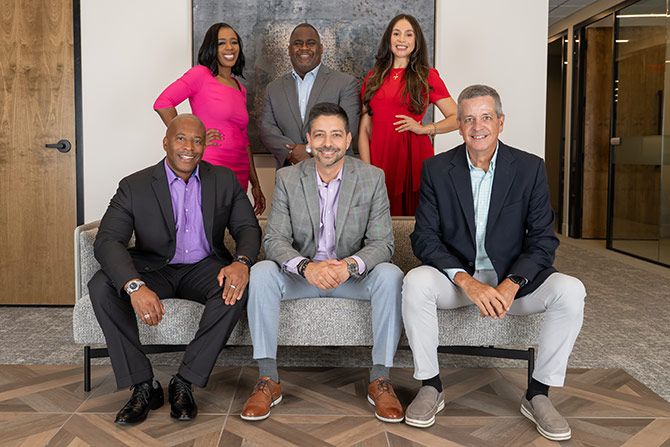
Generations Community Bank leadership team (front row, from left) Kyle Middleton, chief credit officer; Rafael Sanchez, lead organizer, director (will remain on staff at ONB); David Bratton, chief financial officer & chief operating officer; (back row, from left) Brittany Hall, VP-operations; Al London, president & CEO; and Michelle Carrera, chief compliance & risk officer
De Novo
The time from those initial discussions with Old National’s CEO Council to GCB’s anticipated opening will be roughly the 2.5 years it takes the average MDI to get off the ground. It was delayed by the change in presidential administration, but the Indiana Department of Financial Institutions approved the bank’s charter application on July 10, and the FDIC followed suit on Aug. 21. The final piece is to complete the bank’s initial capital raise.
While Old National provided the first significant round of funding and GCB’s top executives are currently on the bank’s payroll, it will not own GCB. London could not disclose the names of additional investors but said they do have many well-known community and business leaders in the bank’s ownership group with the intention of Old National not holding more than 4.99% of Generations’ voting shares moving forward.
Without naming specific institutions, Sanchez confirmed several community banks have signed up as investors with more expressing an interest and running through their approval processes. Assuming it is approved for MDI status, investment can count toward a bank’s Community Reinvestment Act rating even if the community the MDI serves is not in the investing bank’s assessment area.
“We are excited that we have already obtained commitments from other local banks, as we think this is a great opportunity for many banks to collaborate and partner together for the betterment of our community,” London said.
- The last Indiana de novo, according to an ABA analysis of FDIC data, was in 2008 when First Security Bank of Owensboro (KY) Inc. created Warrick Interim Bank as an intermediary as part of its acquisition of Warrick Loan and Savings Association, Boonville. (The combined institution was acquired by German American Bank, Jasper, in 2018.) Prior to that was Evansville Commerce Bank in 2006, which was acquired by Indiana Members Credit Union in 2020.
- “Minority Depository Institutions Program: FDIC Definition of Minority Depository Institution.” Federal Deposit Insurance Corporation. https://bit.ly/FDIC-MDI
- Owners must be U.S. citizens or permanent legal U.S. residents to be counted in determining minority ownership. Qualifying minority populations include Asian or Pacific Islander, Native American or Alaskan Native American, Hispanic American, Black or African American, and Multi-racial. Women-owned or -managed institutions were not included in the statutory definition.
- The National Bankers Association is a trade association representing MDIs and “mission-driven banks that serve underserved and low- to moderate-income communities.” https://www.nationalbankers.org/about-us
- “The State of MDIs 2024.” National Bankers Association. https://bit.ly/NBA-MDI2024
- Old National Bank’s CEO Council is a 12-month program that invites roughly a dozen mid-level employees to make an impact on the organization through tackling unique business opportunities that may normally be considered above their position, all under the direct guidance of bank c-suite executives, including CEO Jim Ryan. This gives them a chance to gain and demonstrate executive‑level skills, accelerating their career advancement and allowing the bank to cultivate its next generation of senior-level talent. https://bit.ly/CEOcouncil_23-24
- “At the Intersection of Opportunity and Need.” Dan Brown, Chris Lewis & Avery Weisel. American Bankers Association. https://bit.ly/ABA-MDI
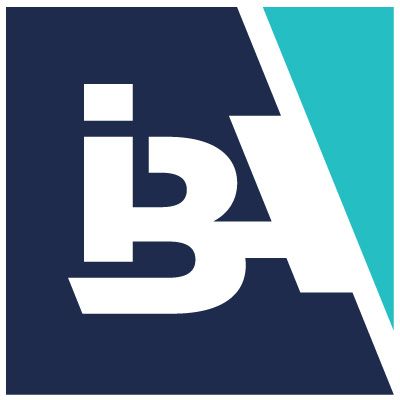
Evan Hoffmeyer, Vice President – Communications
Indiana Bankers Association
Evan is responsible for all the IBA’s print and digital communications. He earned a bachelor’s degree from the University of the Ozarks, a master’s degree from Ball State University, the Certified Association Executive designation from the American Society of Association Executives and graduated from the IBA Leadership Development Program.
Email Evan at EHoffmeyer@indiana.bank




